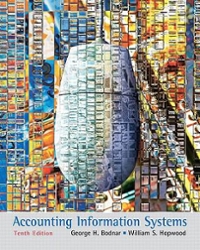Question
4. Two mutually exclusive alternatives, a flexible manufacturing cell and fixed automation, have different cost and revenue characteristics as follows: Flexible Cell Fixed Automation Investment
4. Two mutually exclusive alternatives, a flexible manufacturing cell and fixed automation, have different cost
and revenue characteristics as follows:
Flexible Cell Fixed Automation
Investment $2,000,000 $1,700,000
Life 6 years 3 years
Salvage value $0 $0
Gross cash savings $800,000 in first year; $800,000 per year
increasing by $100,000
per year thereafter
Cash disbursements $300,000 per year $100,000 in first year;
decreasing to $80,000
in second year and
$70,000 in third year
Minimum Attractive Rate of Return (MARR) = 20 % pa.
Study period = 6 years, assuming "repeatability"
Using NPV, which alternative is preferred?
5. Consider the following two mutually exclusive projects and recommend which one should be selected using
NPV method.
Machine
A B
First cost $20,000 $30,000
Life 3 years 6 years
Salvage value $4,000 $3,000
Annual receipts $10,000 $14,000
Annual disbursements $4,400 $8,600
Minimum attractive rate of return = 15% p.a.
Study period = 6 years, assuming "repeatability"
6 It is desired to compare the after-tax economics of two mutually exclusive alternatives with the following
before-tax data:
Semiautomatic Automatic Machine Machine
First cost $100,000 $150,000
Useful life 5 years 5 years
Market value at end of useful life $10,000 $30,000
Annual before-tax cash disbursements $50,000 $15,000
Annual cash revenues $110,000 $90,000
MARR (after tax) = 15% p.a.
Both alternatives are to be depreciated using straight-line depreciation, which is 20% of the initial cost each
year for 5 years. A 40% tax rate is assumed.
Which alternative is better after tax using NPV?
7. It is desired to compare the after-tax economics of two mutually exclusive alternatives with the following
before-tax data:
Semiautomatic Machine AutomaticMachine
First cost $100,000 $150,000
Useful life 4 years 5 years
Market value at end of useful life $0 $0
Annual before-tax cash disbursements $50,000 $15,000
Annual cash revenues $110,000 $90,000
MARR (after tax) = 15% p.a.
Study period = 4 years
Both alternatives are to be depreciated using straight-line depreciation over the life of the machine. It is
assumed that the automatic machine can be sold at the book value after 4 years (i.e. 20% of the first cost
after 4 years of depreciation). A 40% tax rate is assumed.
Which alternative is better after tax using NPV?
8. A company, whose earnings put them in the 35% marginal tax bracket, is considering purchasing a piece of
equipment for $25,000. The equipment will be depreciated using the straight line method over a 4 year
useful life to a salvage value of $5,000. It is estimated that equipment will brings the company $8,000 each
year for 4 years.
Should the equipment be purchased? Use an interest rate of 10%
9 A manufacturer is contemplating the purchase of an additional forklift truck to improve material handling in
the plant. He is considering two popular models, the Convair T6 and the FMC 340. The relevant financial
data are shown below. His MARR is 12%.
Model FirstCost Life Salvage Value AnnualOperating Cost
Convair T6 $20,000 6 $2,000 $8,000
FMC 340 $29,000 7 $4,000 $4,000
(a) Which model is more economical?
(b) List two important assumptions that are implicit in the computation in (a)
10 Fluid Dynamics Company owns a pump that it is contemplating replacing. The old pump has annual
operating and maintenance costs of $8000/year: it can be kept for 4 years more an will have a zero salvage
value at that time. The old pump can be traded in on a new pump. The trade-in value is $4000. The new
pump will cost $18000 and have a value of $9000 in 4 years and will have annual operating and
maintenance costs of $4500/year.
Using the Cash-flow Approach to evaluate the investment alternative based on the present worth method
and a planning horizon of 4 years (MARR = 10%).
Step by Step Solution
There are 3 Steps involved in it
Step: 1

Get Instant Access to Expert-Tailored Solutions
See step-by-step solutions with expert insights and AI powered tools for academic success
Step: 2

Step: 3

Ace Your Homework with AI
Get the answers you need in no time with our AI-driven, step-by-step assistance
Get Started


